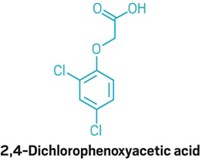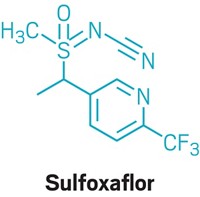Advertisement
Grab your lab coat. Let's get started
Welcome!
Welcome!
Create an account below to get 6 C&EN articles per month, receive newsletters and more - all free.
It seems this is your first time logging in online. Please enter the following information to continue.
As an ACS member you automatically get access to this site. All we need is few more details to create your reading experience.
Not you? Sign in with a different account.
Not you? Sign in with a different account.
ERROR 1
ERROR 1
ERROR 2
ERROR 2
ERROR 2
ERROR 2
ERROR 2
Password and Confirm password must match.
If you have an ACS member number, please enter it here so we can link this account to your membership. (optional)
ERROR 2
ACS values your privacy. By submitting your information, you are gaining access to C&EN and subscribing to our weekly newsletter. We use the information you provide to make your reading experience better, and we will never sell your data to third party members.
Environment
EPA makes slew of decisions on pesticides
Policies and rules completed in finals days of Obama Administration
by Britt E. Erickson
January 13, 2017

With just a few days remaining of the Obama Administration, the Environmental Protection Agency’s office that oversees pesticides has gone into overdrive. The office is churning out rules and policies that have long been in the works, including three on Jan. 12.
In one of those actions, EPA moved to expand the use of Dow AgroScience’s herbicide Enlist Duo, a combination of glyphosate and 2,4-D. The controversial mixture can now be sprayed on cotton that has been genetically modified to tolerate the chemicals, as well as on corn and soybeans in 34 U.S. states.
In a separate move, the agency released draft assessments of four neonicotinoid pesticides, finding potential risks to bees and other pollinators for a few spray applications. The agency also released voluntary guidelines for labeling pesticides to protect pollinators, easing restrictions for some applications at the request of pesticide makers.
Environmental groups are infuriated by EPA’s decision to expand the use of Enlist Duo, as well as by the agency’s move to ease restrictions on some uses of neonicotinoids.
EPA first approved Enlist Duo for use on corn and soybeans in a handful of states in 2014, but the agency then discovered information in a patent application that suggested synergistic effects between the two ingredients. EPA subsequently asked a federal court to overturn the approval.
In November 2016, after receiving additional data from Dow, EPA said that it agrees with the company that the two chemicals do not amplify each other’s toxicity.
Earlier this month, the Center for Biological Diversity, an environmental group, submitted a Freedom of Information Act request seeking data from four unpublished studies by Dow that EPA relied on in making its decision.
“EPA’s about-face on Enlist Duo was very sudden and came only after it received a handful of unpublished studies on the pesticide from Dow,” says Nathan Donley, a senior scientist at the center. “This is extremely troubling because it suggests Dow’s studies painted a completely different picture of the pesticide’s potential toxicities than data the company submitted in earlier applications to another federal agency, the U.S. Patent and Trademark Office.”
The center is also discouraged by EPA’s move to loosen proposed restrictions on neonicotinoids.
EPA proposed in 2015 to prohibit spraying pesticides that are acutely toxic to bees when crops are blooming. But pesticide companies pushed back, arguing that some pesticides have low residual toxicity and that some crops have extended blooming periods. As a result, EPA developed exceptions to the label restrictions for products with short residual toxicity times and crops with extended blooming periods.
“It’s outrageous that on the same day the EPA acknowledged these dangerous pesticides are killing bees it also reversed course on mandating restrictions on their use,” says Lori Ann Burd, director of the Center for Biological Diversity’s environmental health program.





Join the conversation
Contact the reporter
Submit a Letter to the Editor for publication
Engage with us on Twitter